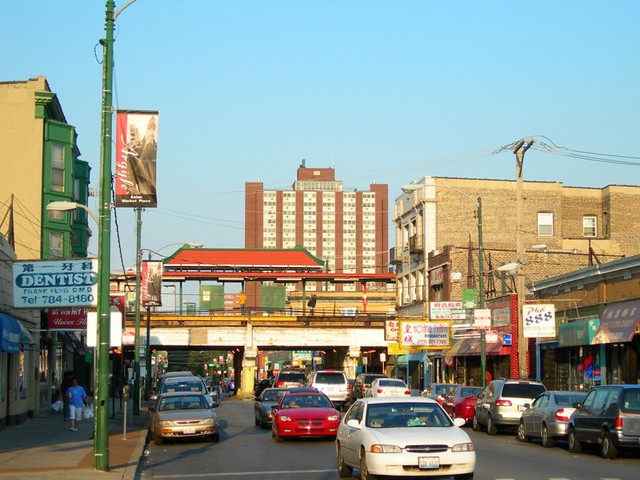
Yesterday’s nine-hour standoff between police and an alleged murderer, which shut down North Lake Shore Drive and created Carmageddon on nearby surface streets, highlighted why Chicago is fortunate to have multiple transportation options. Around 12:30 p.m., officers began chasing accused killer Joseph Andrew Felton Jr., 43, in his car from south-suburban Harvey, through the South Side. The fugitive rammed several cars on LSD before his vehicle landed in the grass east of the northbound lanes near the Fullerton offramp.
While the police negotiated with Felton, who falsely claimed to have guns but could not easily be seen through his tinted windows, the highway was closed for 6.4 miles, from Chicago Avenue to Bryn Mawr. Around 9:30 p.m., the authorities succeeded in flushing Felton out of his car using a “flash bang grenade." After the accused, who had slashed his wrists, was transported to a hospital, the drive was completely reopened at about 4:20 a.m. this morning, police said.
Shortly after the standoff began, the CTA was told to reroute buses off of the highway, according to the Chicago Tribune. However, thousands of motorists initially found themselves marooned on the drive with no information about what was going on. The off-ramps were jammed with vehicles, and traffic on the drive was backed up for miles. It was a scene reminiscent of the 2011 blizzard when hundreds of drivers were stranded on the highway, with some stuck in their cars for 12 hours.
Some drivers took matters into their own hands, improvising potentially dangerous exit routes, the Tribune reported. Motorists left the road by driving the wrong way down on-ramps, while others blazed a trail over tree-filled medians to access Marine Drive, which parallels LSD. Around 2 p.m., an Outer Drive Express bus driver let customers exit to run across the median to Marine, according to the Trib.
Parallel arterials west of the drive, such as Clark, were soon hopelessly jammed with drivers seeking alternative routes. The Trib reported that performers rushing to shows at the Chicago Shakespeare Theater and Lyric Opera were severely delayed, and spoke with Bob Backis, who tried in vain to drive downtown from the Far North Side to services at Holy Name Cathedral, 735 North State.
After being turned away from several LSD on-ramps, Backis and his wife parked near the Wilson Red Line station and rode the ‘L’ to the church. "We were determined to try to make it down any way we could," he told the paper. The train probably should have been their first choice, not last resort, for getting there, since the cathedral is virtually next door to the Red Line’s Chicago Avenue stop.
I had a similar experience yesterday. Having gotten a lift to Uptown, I had an appointment there in the early afternoon. The other person, coming from the Near North Side, called to say he’d be delayed due to the terrible traffic on Clark, and eventually canceled the meeting. After grabbing a bowl of Vietnamese noodle soup on Argyle, I caught the Red Line at the eponymous ‘L’ station and rode the not-terribly-crowded train to Fullerton, where I picked up a Divvy bike and pedaled back to Logan Square.
As illustrated by the light snowstorm that completely shut down Atlanta earlier this winter, cities that don’t offer a good array of transportation options, as well as a robust street grid, can be paralyzed when things go wrong on a major street. In addition to our wide array of routing options, Chicagoans are lucky to be able to choose from many possible travel modes. As Sunday showed, when a crisis turns the surface streets into a parking lot, rapid transit and bike-share offer handy escape routes.




